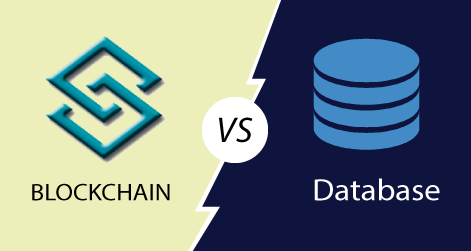How Is Blockchain Different From Database
next → ← prev
Difference between Blockchain and Database
Blockchain
A blockchain is a database or a ledger that stores information in a data structure called blocks. It is based on distributed ledger technology which can be used between parties that don't trust each other with data. It is because when you add anything onto the blockchain, it requires verification from all other users available on the network.
Blockchain keeps information permanently in uniformly sized blocks, where each block stores the hashed information from the previous block to provide cryptographic security. The blockchain hashing uses SHA256 hashing algorithm, which is a one-way hash function. The hashed information is the data and a digital signature from the previous block. The hashes of previous blocks that go back to the very first block produced in the blockchain are known as the genesis block. A blockchain data structure is in the form of a Merkle Tree, which is used as an efficient way to verify data.
Advantage of Blockchain
Blockchain technology has become popular because of the following.
- Time reduction: In the financial industry, blockchain can allow the quicker settlement of trades. It does not take a lengthy process for verification, settlement, and clearance.
- Unchangeable transactions: Blockchain only allows insertion of data, which means when a new block is added to the chain of ledgers, it cannot be removed or modified.
- Reliability: Blockchain certifies and verifies the identities of each interested parties. This removes double records, reducing rates and accelerates transactions.
- Security: Blockchain uses very advanced cryptography to make sure that the information is locked inside the blockchain. It uses Distributed Ledger Technology where each party holds a copy of the original chain, so the system remains operative, even the large number of other nodes fall.
- Decentralized: It is because there is no central authority supervising anything. There are standards rules on how every node exchanges the blockchain information.
Databases
A database is a kind of central ledger where the administrator manages everything. Here the administrator gives rights to read, write, update, or delete operation. Since it is centralized in nature, their maintenance is easy, and output is high. But it also has a drawback which, when corrupted, can compromise the entire data and can even change the ownership of digital records.
A database uses a client-server network architecture. Here database administrator has rights to make changes in any part of the data and its structure.

Advantage of Database
The database has become popular because of the following.
- Controls database redundancy: It is because it stores all the data in one single database file and that recorded data is placed in the database.
- Data sharing: In DBMS, the authorized users of an organization can share the data among multiple users.
- Easily Maintenance: It can be easily maintainable due to the centralized nature of the database system.
- Reduce time: It reduces development time and maintenance need.
- Backup: It provides backup and recovery subsystems which create an automatic backup of data from hardware and software failures and restores the data if required.
- Multiple user interfaces: It provides different types of user interfaces like graphical user interfaces, application program interfaces.
Blockchain vs Database
We can see the difference between blockchain and database in the below table.

| SN | Blockchain | Database |
|---|---|---|
| 1. | Blockchain is decentralized because there is no admin or in-charge. | The database is centralized because it has admins and in-charge. |
| 2. | Blockchain is permissionless because anyone can access it. | The database required permission because it can be accessed only by entities who have rights to access. |
| 3. | Blockchains are slow. | Databases are fast. |
| 4. | It has a history of records and ownership of digital records. | It has no history of records and ownership of records. |
| 5. | Blockchain is fully confidential. | The database is not fully confidential. |
| 6. | Blockchain has only Insert operation. | The database has Create, Read, Update, and Delete operation. |
| 7. | It is a fully robust technology. | It is not entirely robust technology. |
| 8. | Disintermediation is allowed with blockchain. | Disintermediation is not allowed with the database. |
| 9. | Anyone with the right proof of work can write on the blockchain. | Only entities entitled to read or write can do so. |
| 10. | Blockchain is not recursive. Here, we cannot go back to repeat a task on any record. | The database is recursive. Here, we can go back to repeat a task on a particular record. |
Next Topic Bitcoin Mitigating Attacks
← prev next →
How Is Blockchain Different From Database
Source: https://www.javatpoint.com/blockchain-vs-database